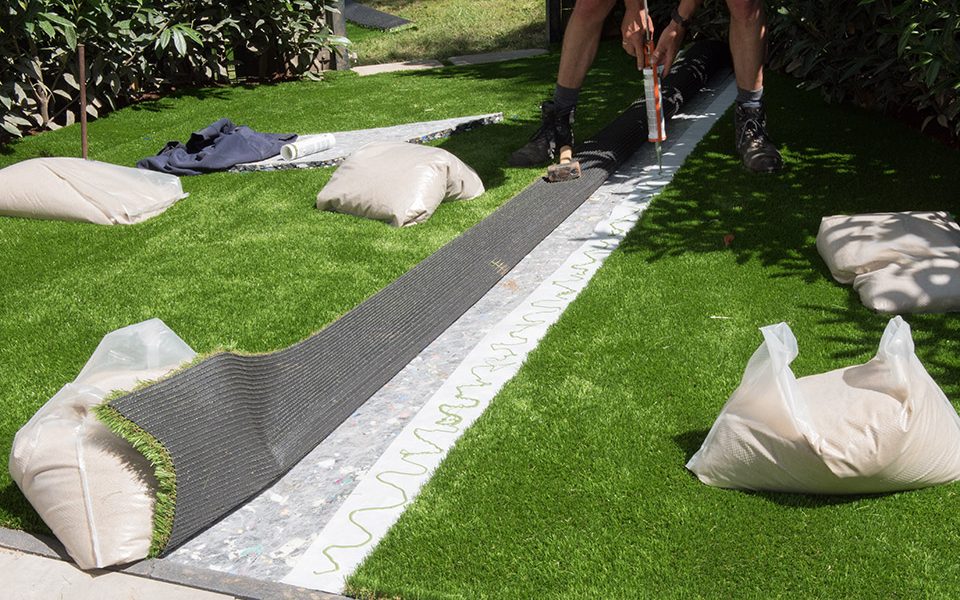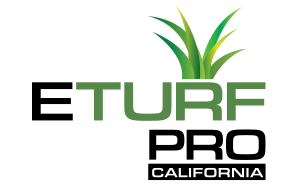Types of Edging Systems For Artificial Turf
There is no doubt that artificial turf has become so popular in recent years. It requires no mowing, is easy to clean, and will never die from lack of water while maintaining a pristine condition.
However, you must get the installation right to get the most out of your artificial turf lawn. And one of the most vital parts of this process is edging.
A crisp, clean finish is impossible without a sharp, defined edge. Whether it is through landscape or curbing, edging systems are an essential requirement.
Furthermore, choosing the right edging system can be a dilemma. That is why we decided to offer you a complete guide to various edging systems for artificial turf.
Why Is Edging Important?
While many people understand the importance of well-cut panels that merge well into each other with invisible seams, they often disregard the exterior edges.
Artificial turf edging serves a dual purpose: It holds the turf in place while securing the base and provides anchorage to the external edges of the lawn.
If artificial turf is not well secured and installed, it may compromise the integrity of the base materials. This leads to sinking synthetic lawn edges into the soils and base materials. And repair can be an expensive undertaking. Therefore, it is vital to get it right during the first installation.
Besides looking messy, poorly installed edging can also expose loose spikes and nails while the sub-base erodes. This eventually poses a massive safety and health risk, especially to pets and children.
6 Main Types Of Edging Systems For Artificial Turf
Pressure-Treated Timber Edging
Pressure-treated timber is the most commonly used edging system for artificial turf because it is cost-effective and can be trimmed to size and installed easily.
A major downside to using timber and why it is a cheaper option is because its average life expectancy is about 10 years. The wood will rot away eventually as moisture penetrates it.
The best way to secure it is by driving timber stakes into the ground and fixing the edging using a decking screw.
Timber offers an ideal surface to secure the perimeter, which can best be done using galvanized nails spaced approximately 100m apart. To create an even stronger edge, you can tuck your turf’s edges around the timber.
The size of timber you use should be equal to the depth of the laying course and sub-base. For instance, if your laying course is 25 mm deep and the sub-base is 50 mm deep, your ideal timber would be 75mm × 50mm (3” × 2”). You can either fix the synthetic grass to the timber or cut it up to the timber according to your desired finish.
Composite Plastic Edging
Composite plastic edging is an upgrade to timber.
This edging is easy to install and is secured through composite plastic stakes driven into the ground. If you want to invest in an edging option that is more durable, composite plastic lumber’s life expectancy is almost 25 years since it is moisture-resistant.
The only problem with plastic edging is the cost. It is usually up to 4 times the price of timber.
Steel Edging
Like timber, steel edging solutions are also growing in popularity, usually, because the material is flexible and can be bent into various shapes and styles according to the user.
Like composite plastic edging, steel has an extended lifespan than timber and can be installed easily. As a result, they tend to be more expensive than timber.
When installing an artificial lawn, you can lay it up and cut it into the metal, then fix it with standard galvanized U-pins, preventing the edges from lifting.
Alternatively, some steel edgings come with tabs, which you can glue to the synthetic turf to facilitate installation. The only downside to applying adhesive is that once the glue dries, you cannot adjust your lawn or fix lingering wrinkles and creases.
Pressure-Treated Sleepers
Edging sleepers safeguard artificial turf against the elements, ensuring your edging system maintains a good condition for an extended period. Ensure to treat cut edges to avoid weather conditions rotting the material away.
You can use sleepers as a perimeter for your turf’s sub-base and an anchor for your synthetic turf. Simply secure the edge with galvanized nails or decking screws at a 45-degree angle.
The sleepers are already fixed by laying them on a concrete bed, on the ground, or fixing them to stakes/posts. Whichever method you choose lies entirely on you.
Sleepers can be stacked above each other, offering themselves to an elevated flower bed. This allows for flexibility, especially if you plan on adding plants in and around your lawn.
Paving
This is the best edging system if you are considering edging for a sports field installation or any larger installation.
Besides providing stiff anchorage to your artificial turf, it will also give spectators somewhere to stand.
Also, you can seamlessly enhance a paved area and make it large. Unlike other forms of edging, paving does not give you a raised edge. It is also low maintenance and easy to clean, making it a popular choice in public settings.
Concrete Gravel Boards
This edging system is especially important if you plan to lay your artificial turf in a way that runs up to a garden fence.
Concrete gravel boards consist of a concrete perimeter used in place of the lowest slat of a fence. Since wood rots from moisture when laid on the ground, a concrete gravel board can be used instead.
It is, however, a permanent solution that makes it difficult to substitute your fence in the future. And as with paving, you will have to secure the edge of your turf with spikes driven into the ground.
And Now Over to You
Choosing the best edging system for your artificial turf is not always easy. But with some help from our fake lawn company, it will go smoothly.
The primary purpose is to provide the various edging options, plus their lifespan and quality, so that you can choose the ideal edging system according to your artificial turf. Let us guide you.


